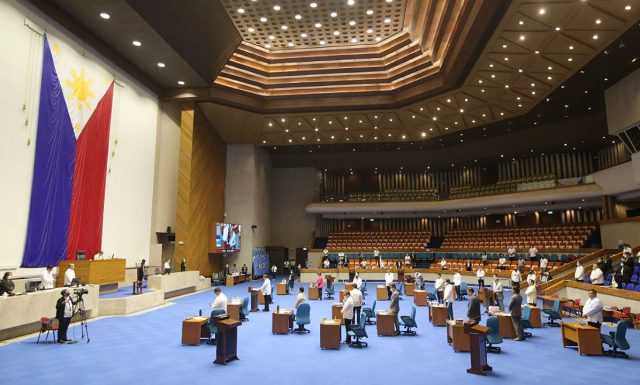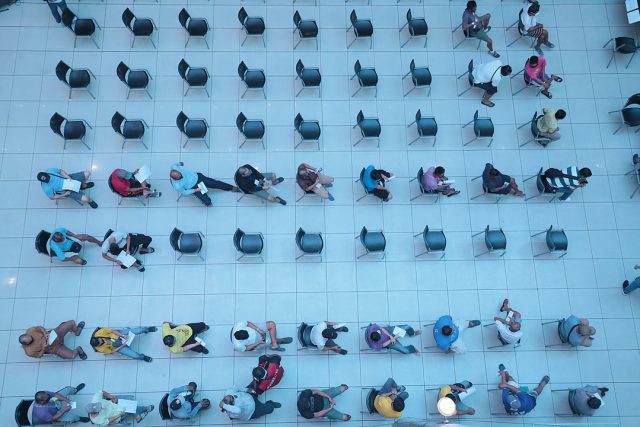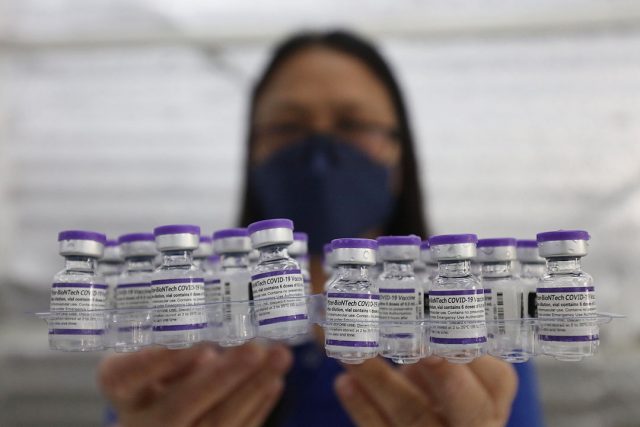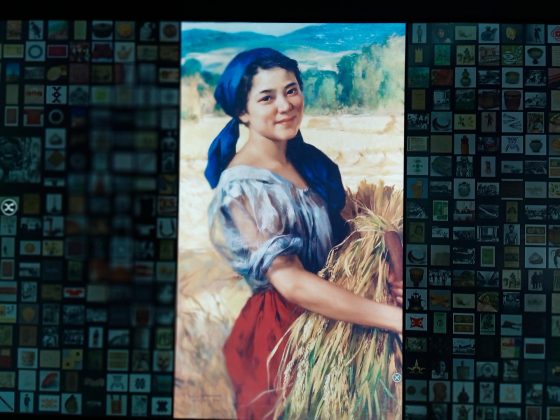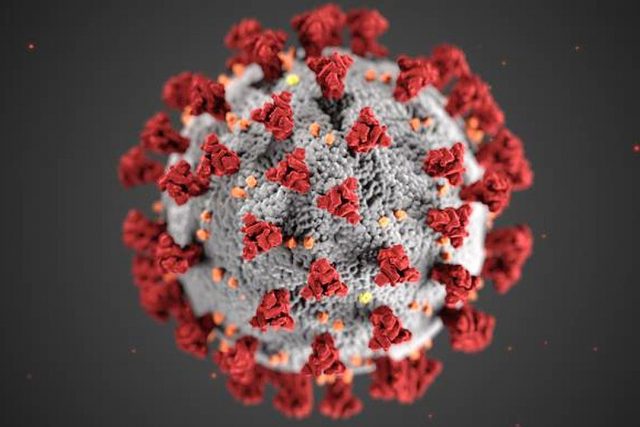AN 18th century molave wood altarpiece, paintings by Juan Luna, Felix R. Hidalgo, and Fernando Zobel, a touchscreen gallery, heritage objects, and the dioramas are some items which can be viewed onsite now after a long while when Ayala Museum visitors could only see the museum’s collections online by browsing through virtual galleries. Two years after its temporary closure for renovations, the museum reopens for a month-long soft opening in December.
BusinessWorld booked a visit during the first weekend of its soft opening on Dec. 4. Upon arrival, guests have their temperatures checked and are required to present their vaccination cards, a receipt of reservation, and an accomplished Stay Safe app for contact tracing.
Visitors enter the museum through its expanded lobby which now includes what used to be the passageway between the museum and M Café. The lobby now has high ceilings and wooden slats adorn its interiors. The Museum Shop has been relocated to the lobby for easier access to guests.
“The renovation actually began in Aug. 2019,” said Ma. Elizabeth “Mariles” L. Gustilo, Ayala Museum Arts and Culture Senior Director, in an e-mail to BusinessWorld. “The open design and the idea of borrowed landscape by Leandro V. Locsin & Partners (LVLP) and design consultant Taku Shimizu was already in place before COVID-19 (coronavirus disease 2019) hit. The glass operable doors facing Greenbelt Gardens are meant to bring the outside in, especially for events.”
THE NEW SPACE
The highlight of the lobby is a new eight-panel Digital Gallery. After putting on the provided finger gloves, visitors can browse through 1,000 objects from the museum and library collections.
Ms. Gustilo explained that the design was so visitors are able to “touch” the objects in the collections and to “have a more intimate conversation and up-close learning experience with them.”
The idea for the Digital Gallery came from awareness of new technologies being used in museums abroad, such as the Cleveland Art Museum’s ArtLens, the Guggenheim Bilbao, and the Cooper Hewitt Design Museum.
“We worked with New York-based design firm Local Projects on the design experience to meet our objectives,” said Ms. Gustillo. “Australia based Piction developed the Data Asset Management system that is the heart not only of the Digital Gallery but the entire omnichannel experience. While Helsinki based Multitaction provided the hardware — multitouch, interactive screens.
The lobby also has an exhibition curated by Kenneth Esguerra titled “Ayala Museum: In Microcosm” which offers a selection of objects of artistic and cultural significance.
THE GALLERIES AND THE LIBRARY
Guests are encouraged to explore the galleries starting at the third floor. That is where the museum’s renovated Main Gallery is found. Currently on view there is the exhibition “Intertwined: Transpacific, Transcultural Philippines,” curated by Florina Capistrano-Baker Ph.D. It features over 240 objects representing the country’s trans-Pacific heritage.
At the same floor is a new gallery dedicated to honoring artist Fernando Zobel (1924-1984), who in the 1950s first envisioned what would eventually become the Ayala Museum (the museum first opened in the old Insular Life building in 1967).
On view in the gallery is the exhibition “Landscape into Painting: Fernando Zobel Serie Blanca,” curated by Ditas R. Samson. It focuses on Mr. Zobel’s body of work executed from 1975 to 1978 referred to as Serie Blanca. This exhibition aims to show why it is, as described in a press release, “considered the artist’s most lyrical and enigmatic work in pure abstraction.”
The 60 dioramas narrating events in Philippine history in the museum’s mainstay “Diorama Experience” exhibition have been updated with new graphics and an audio guide accessible through the Ayala Museum app.
Meanwhile, the permanent galleries where the museum’s collections of Philippine Gold, Indigenous Textiles and Southeast Asian Trade Ware Ceramics are now located at the fourth floor. These are targeted to open to public by April 2022.
A MORE COMFORTABLE LIBRARY
The revamped Filipinas Heritage Library (FHL) is now open, providing a comfortable environment for study and research.
“The library offers a warm, refurbished setting for researchers and book lovers. Visitors can enjoy city views from Ayala Museum’s 6th floor while studying and getting their research needs met,” Filipinas Heritage Library Senior Manager John Labella told BusinessWorld in an e-mail.
“The Jewel Box, while closed to visitors, is the visual highlight of the reading room. Conserving books related to the Second World War, this temperature-controlled glass box allows visitors a glimpse of the materials forming the Rod Hall Collection, the core collection of FHL,” Mr. Labella said.
In 2022, the library will present the second season of Muni Muni Stories, podcasts focusing on Philippine music and film, and will also offer for viewing documentary films on the Philippines by Hugh Gibb, digitized with a National Commission for Culture and the Arts grant. An FHL exhibition about the Liberation is in the pipeline for April next year.
Aside from the galleries and the library, a kiosk which will serve snacks and refreshments will also open soon at the museum.
GOING OMNICHANNEL
Prior to the pandemic, the Ayala Museum regularly held events, like concerts, lectures, and workshops, mostly on weekends, such as Free Museum Day, the Rush Hour concert series, and “History Comes Alive!” Lecture series with historian Ambeth Ocampo.
Ms. Gustilo said that the museum’s activities will still likely be hybrid experiences “as a response to the pandemic and as a way to reach more audiences.”
Meanwhile, the museum’s partnerships with schools remain virtual.
“School field trips onsite are the lifeblood of any museum. So we look forward to welcoming them back to Ayala Museum,” Ms. Gustilo said. “But having gone omnichannel, we can also now offer alternative options to non-Metro Manila schools through virtual field trips.”
The museum’s official opening will be in the first semester of 2022.
Visits to the museum and library must be prebooked, and entries will be timed, and capacity will be limited. All guests visiting the museum and library, regardless of age, must be fully vaccinated and will have to provide proof of vaccination upon entry. Full protocols, visitation guidelines, and reminders are available on Ayala Museum’s new website (www.ayalamuseum.org/visit). To book a library visit, go to www.filipinaslibrary.org.ph/booking. For event inquiries, visit www.ayalamuseum.org/event-spaces. — Michelle Anne P. Soliman




